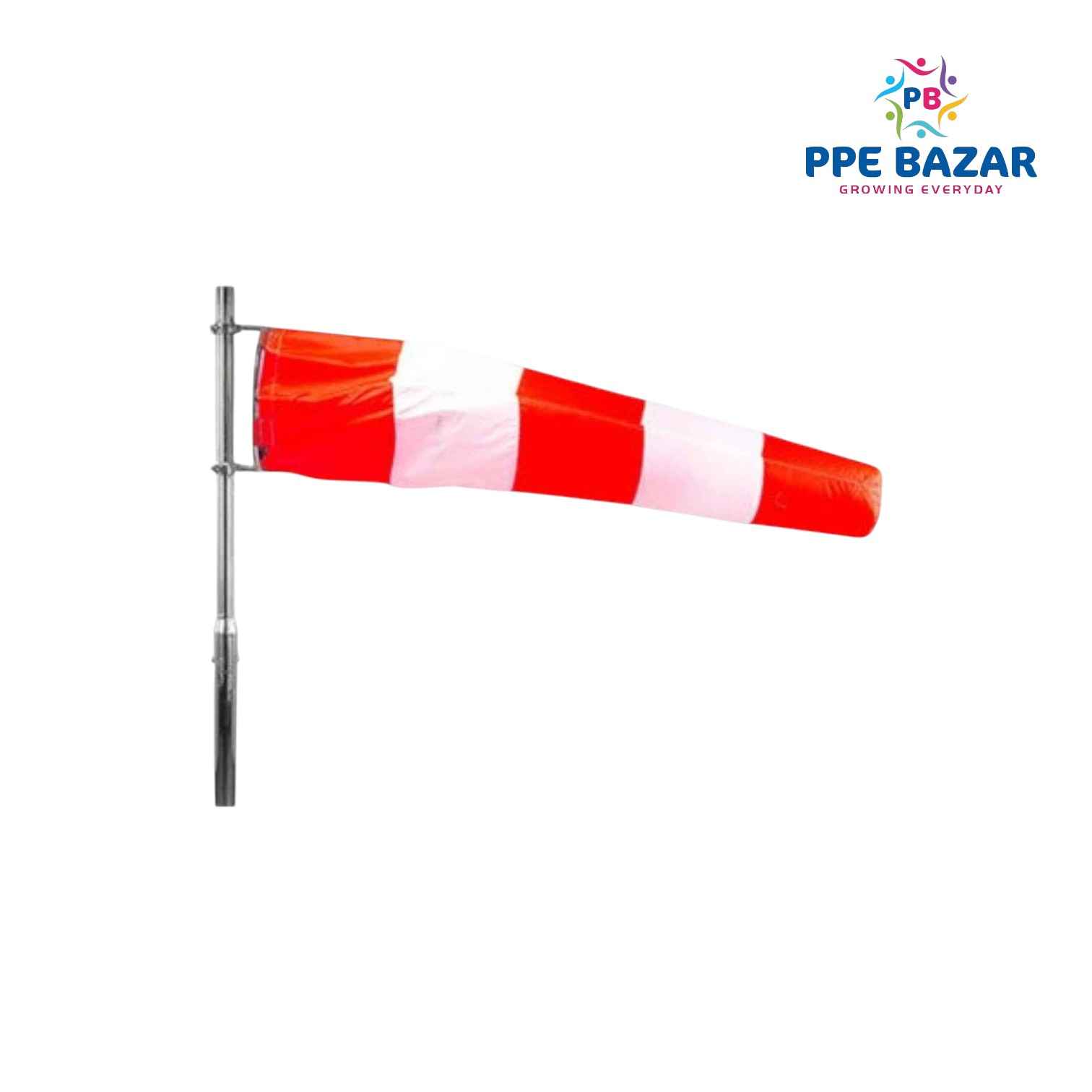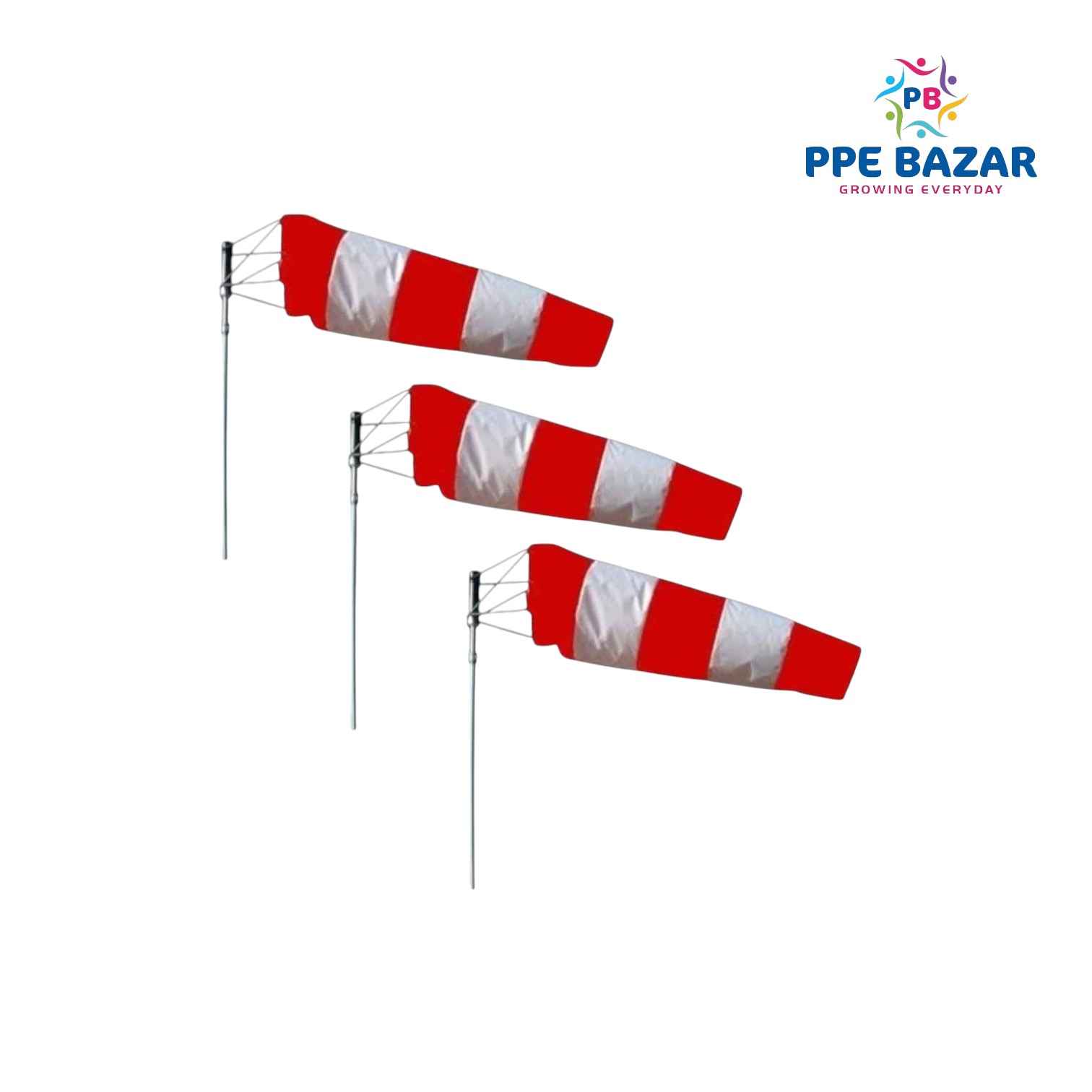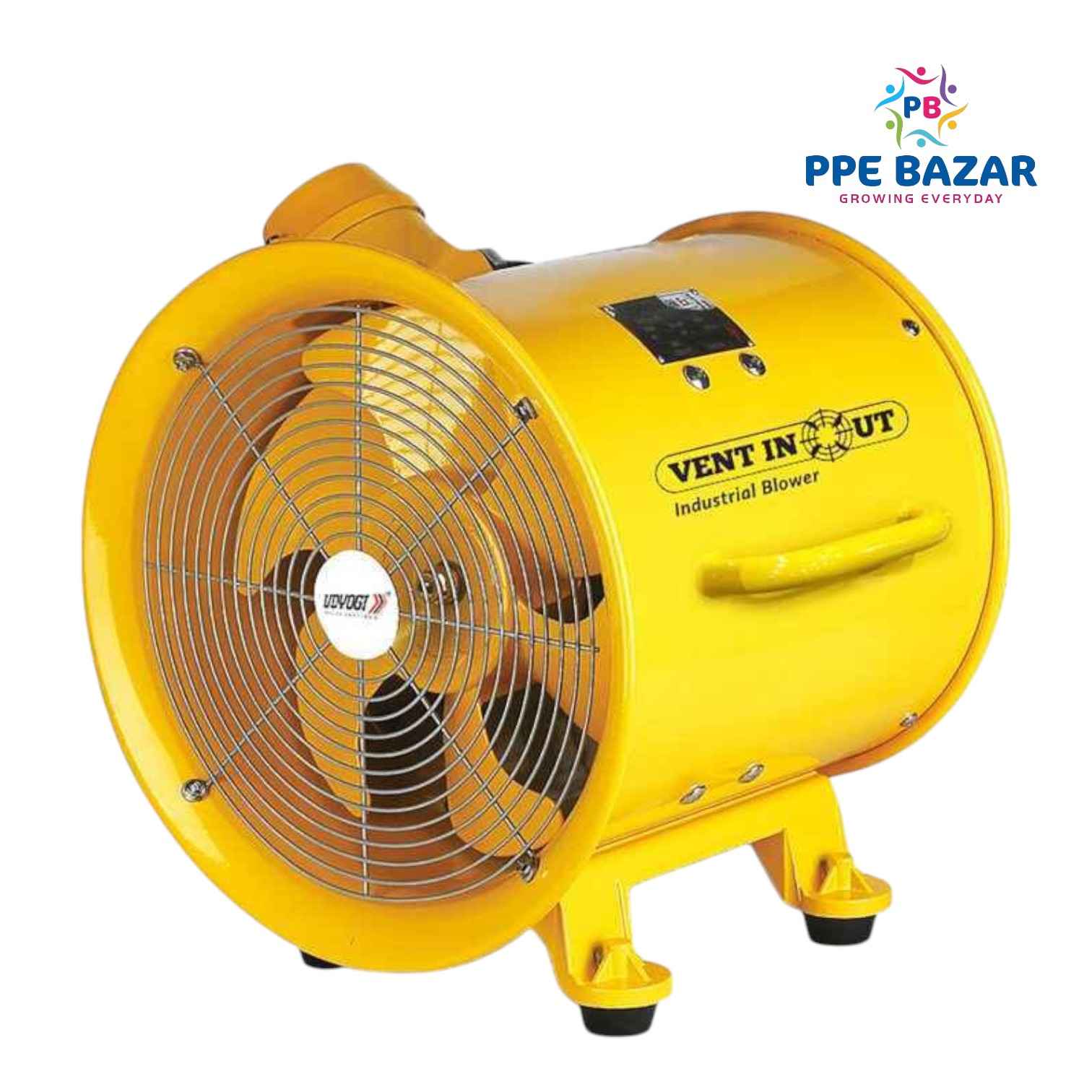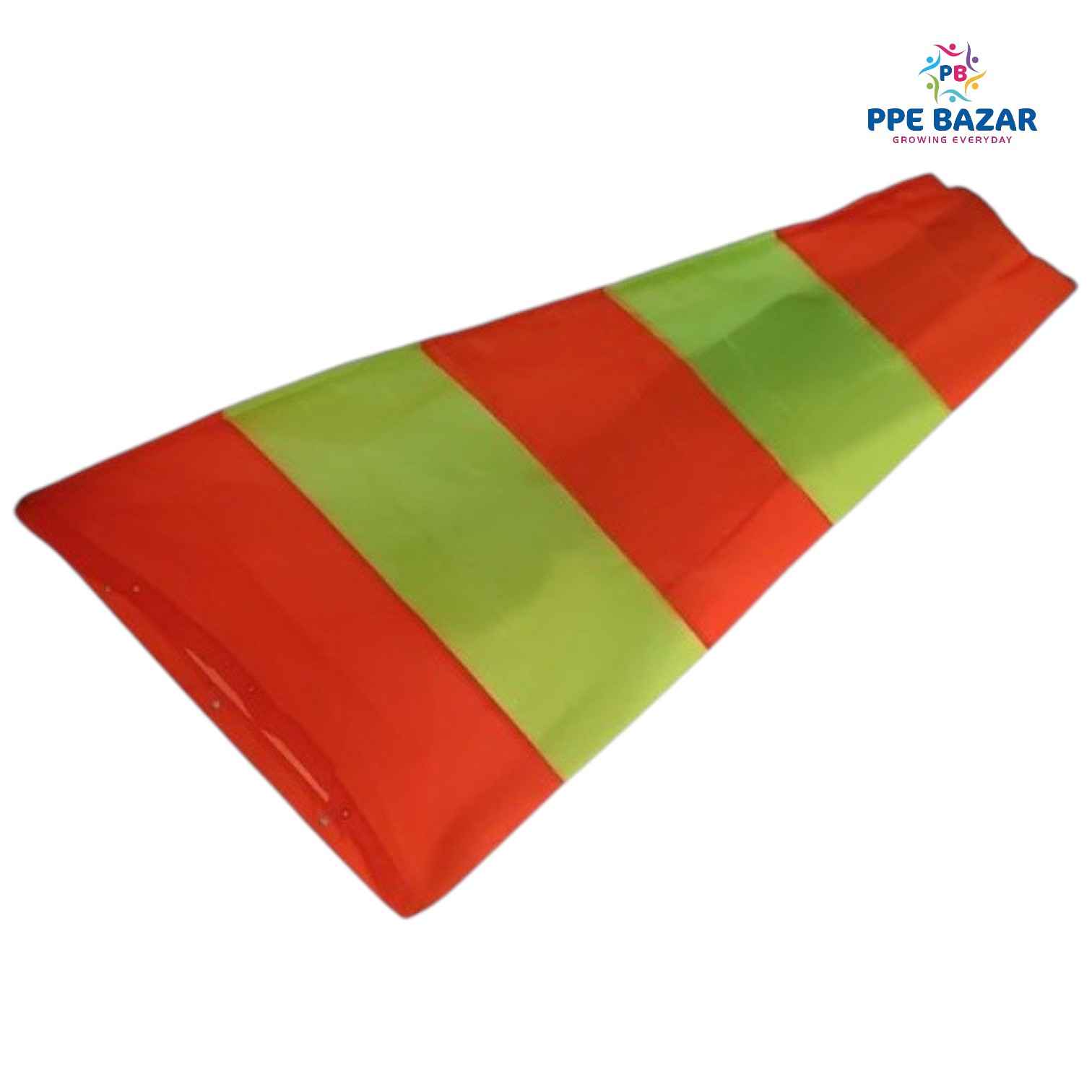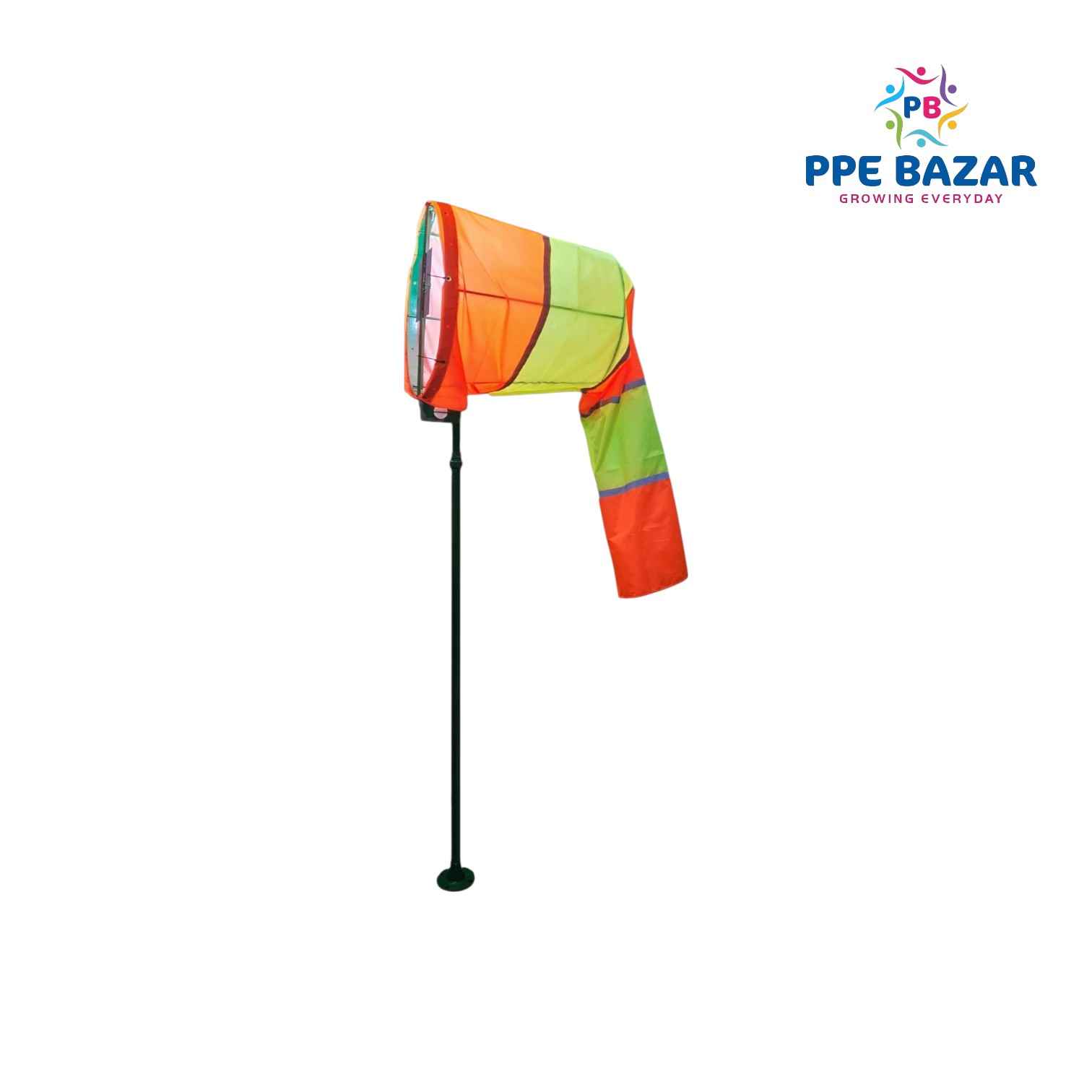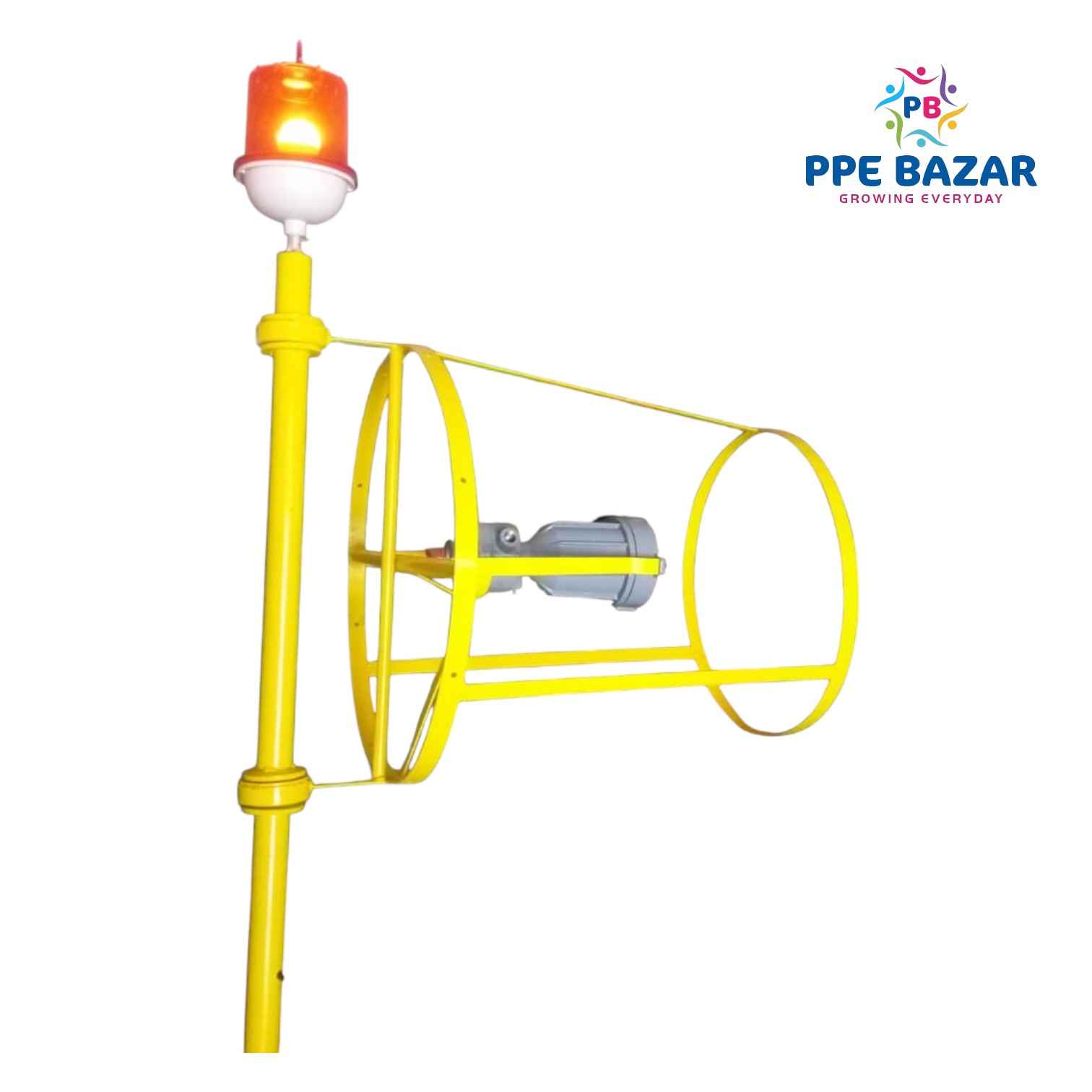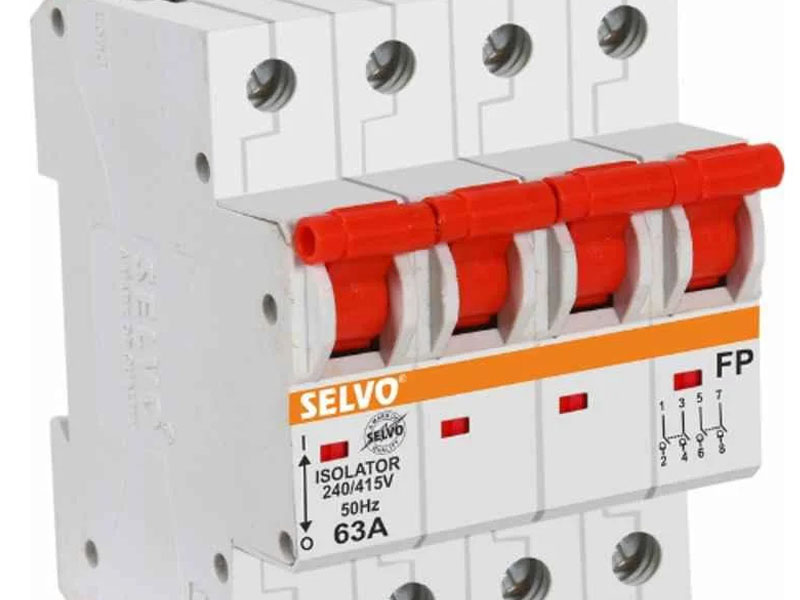A windsock is a conical textile tube that is used to indicate the direction and strength of the wind. It is often seen at airports, chemical plants, oil rigs, and other locations where wind conditions are crucial for safety and operations.
Description:
- Shape: A tapered, conical cylinder with one open, wide end (wind entrance) and one narrow, closed end (tail).
- Material: Typically made from lightweight, durable fabrics like nylon or polyester, often coated with UV-resistant or weather-resistant materials to withstand outdoor conditions.
- Color: Often brightly colored for visibility, with alternating bands of colors (commonly red and white, orange and white, or other high-contrast colors) to make wind speed estimation easier.
- Size: Comes in various sizes, ranging from small personal windsocks (1–2 feet in length) to large ones used at airports (10–20 feet in length).
Features:
Wind Direction Indication:
- The wide end of the windsock catches the wind, and the tail points in the opposite direction, indicating where the wind is coming from.
Wind Speed Indication:
- The windsock inflates depending on wind speed. When fully extended, it indicates a strong wind; when only partially inflated, it shows a lighter breeze.
- Some windsocks are calibrated with specific bands to provide a rough estimate of wind speed by how much of the sock is inflated.
360-Degree Rotation:
- Mounted on a pole or frame that allows it to rotate freely, enabling the windsock to respond to changes in wind direction.
UV and Weather Resistant:
- Designed to withstand prolonged exposure to the sun, wind, rain, and other outdoor conditions without fading or degrading.
Lightweight and Portable:
- Easy to install and can be used in a variety of locations, from personal properties to industrial settings.
Low Maintenance:
- Simple construction with minimal parts, so it requires little maintenance aside from occasional cleaning or replacement after long-term use.
Applications:
- Aviation: Used at airports to guide pilots on wind direction and speed during landing and takeoff.
- Maritime: Helps in docking and navigating ships by showing wind direction.
- Industrial: Used in chemical plants, oil rigs, or construction sites where wind direction could affect safety or operations.
- Sports and Recreation: Can be seen at airfields, paragliding spots, and even in outdoor activities where wind conditions are important.
Let me know if you'd like additional details or visuals!
A windsock is a conical textile tube that is used to indicate the direction and strength of the wind. It is often seen at airports, chemical plants, oil rigs, and other locations where wind conditions are crucial for safety and operations.
Description:
- Shape: A tapered, conical cylinder with one open, wide end (wind entrance) and one narrow, closed end (tail).
- Material: Typically made from lightweight, durable fabrics like nylon or polyester, often coated with UV-resistant or weather-resistant materials to withstand outdoor conditions.
- Color: Often brightly colored for visibility, with alternating bands of colors (commonly red and white, orange and white, or other high-contrast colors) to make wind speed estimation easier.
- Size: Comes in various sizes, ranging from small personal windsocks (1–2 feet in length) to large ones used at airports (10–20 feet in length).
Features:
Wind Direction Indication:
- The wide end of the windsock catches the wind, and the tail points in the opposite direction, indicating where the wind is coming from.
Wind Speed Indication:
- The windsock inflates depending on wind speed. When fully extended, it indicates a strong wind; when only partially inflated, it shows a lighter breeze.
- Some windsocks are calibrated with specific bands to provide a rough estimate of wind speed by how much of the sock is inflated.
360-Degree Rotation:
- Mounted on a pole or frame that allows it to rotate freely, enabling the windsock to respond to changes in wind direction.
UV and Weather Resistant:
- Designed to withstand prolonged exposure to the sun, wind, rain, and other outdoor conditions without fading or degrading.
Lightweight and Portable:
- Easy to install and can be used in a variety of locations, from personal properties to industrial settings.
Low Maintenance:
- Simple construction with minimal parts, so it requires little maintenance aside from occasional cleaning or replacement after long-term use.
Applications:
- Aviation: Used at airports to guide pilots on wind direction and speed during landing and takeoff.
- Maritime: Helps in docking and navigating ships by showing wind direction.
- Industrial: Used in chemical plants, oil rigs, or construction sites where wind direction could affect safety or operations.
- Sports and Recreation: Can be seen at airfields, paragliding spots, and even in outdoor activities where wind conditions are important.
Let me know if you'd like additional details or visuals!
